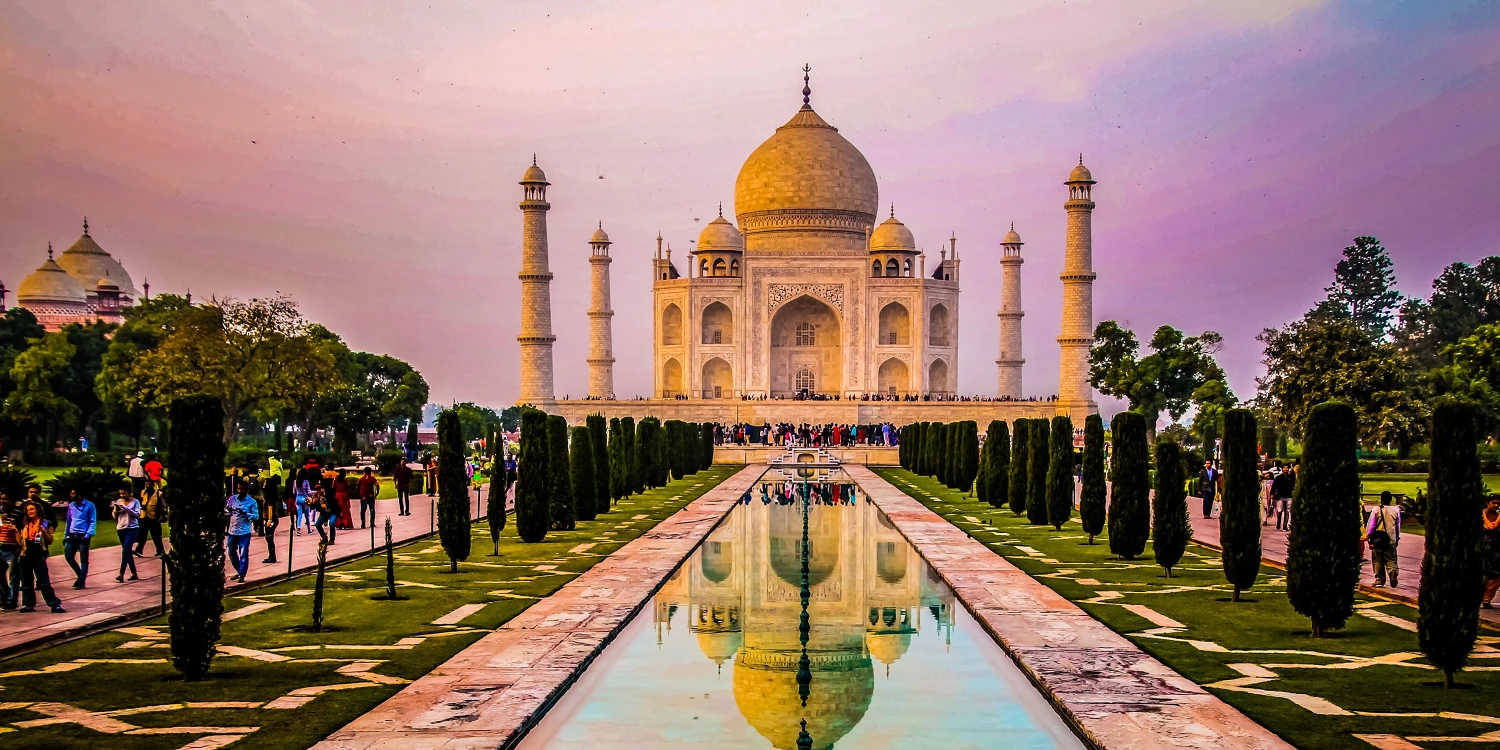Taj Mahal India’s Eternal Symbol of Love
The Taj Mahal, often described as “a teardrop on the cheek of time,” is one of the most iconic and recognizable monuments in the world. Situated in the city of Agra, in the northern Indian state of Uttar Pradesh, the Taj Mahal is not just an architectural marvel but also a testament to everlasting love and an embodiment of India’s rich cultural heritage. This article delves into the history, architecture, significance, and enduring allure of the Taj Mahal.

A Historical Masterpiece
The Taj Mahal was built by the Mughal Emperor Shah Jahan in memory of his beloved wife Mumtaz Mahal, who died during childbirth in 1631. Construction of this magnificent mausoleum began in 1632 and took approximately 22 years to complete. The Taj Mahal’s design is often attributed to the renowned architect Ustad Ahmad Lahori, blending elements of Persian, Islamic, and Indian architecture.
Architectural Marvel
The Taj Mahal is celebrated for its stunning architectural features and meticulous craftsmanship. Its most distinctive feature is the use of pristine white Makrana marble, which reflects the changing moods of daylight. The central structure is surrounded by beautiful gardens and a reflecting pool, creating a sense of symmetry and serenity.
The main mausoleum, crowned by a magnificent dome, is flanked by four elegant minarets that slightly tilt outward. The intricate details of the marble inlay work, using precious and semi-precious gemstones, showcase the exquisite craftsmanship of the Mughal artisans. Inside, the tomb of Mumtaz Mahal and Shah Jahan rests side by side, a symbol of their eternal love.
Symbol of Eternal Love
The Taj Mahal is more than just a stunning architectural wonder; it embodies a poignant love story. Shah Jahan’s grief over the death of his beloved wife is said to have inspired him to build this monument of unparalleled beauty. It stands as a testament to the enduring power of love and devotion, making it a popular destination for lovers and honeymooners from around the world.
UNESCO World Heritage Site
In 1983, the Taj Mahal was designated as a UNESCO World Heritage Site, recognizing its immense cultural and historical significance. It is also considered one of the Seven Wonders of the World, drawing millions of visitors each year who come to admire its splendor and learn about its rich history.
Preserving the Taj Mahal
Over the years, environmental factors and pollution have taken a toll on the Taj Mahal, causing discoloration and damage to its marble façade. To protect this iconic monument, the Indian government has implemented various conservation measures, including restrictions on industrial activities in the vicinity and the use of eco-friendly methods for cleaning and restoration.
Conclusion
The Taj Mahal is not just a monument; it’s a symbol of love, artistry, and India’s enduring heritage. It continues to captivate hearts and minds across the globe, drawing visitors with its timeless beauty and poignant history. As a monument to eternal love, the Taj Mahal stands as an everlasting reminder of the power of love to transcend time and leave an indelible mark on the world. It is a treasure that will continue to be cherished for generations to come, an immortal legacy of Shah Jahan’s love for Mumtaz Mahal.
Discover the magic of the Taj Mahal with our exclusive tour packages. Explore the iconic monument of love and experience the rich history of India with Vacation Trip India’s Taj Mahal tour packages.
